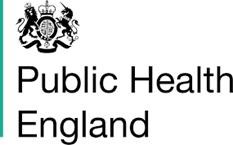
When campaigners write to Councillors, MPs, or Schools they find more often than not that the standard response is that they are following PHE guidelines.
The PHE guidelines defer to the ICNIRP recommended exposure levels for non-ionising radiation (NIR). This is incredibly frustrating since the guidelines are not fit for purpose, but there is still a brick wall defending them.
- The ICNIRP and PHE say that the available scientific evidence (for harmful non-thermal biological effects) is not sufficiently robust or compelling. For further discussion see Appendix
- In January 2020 the Appeal Court in Turin found that “Scientists financed by the telecom industry, as well as ICNIRP members, are less reliable than independent scientists.”
- See this link for the PHE collection of guidelines.
5G: “In relation to the implementation of 5G devices and networks, this technology is at an early stage and reflects the latest evolution in mobile communications technology. Current technical standards that draw on the ICNIRP guidelines will apply to the products that are developed. UK network operators are already committed to complying with the ICNIRP guidelines.” Link to PHE here.
WiFi: “There is no consistent evidence of health effects from RF exposures below guideline levels and no reason why schools and others should not use wi-fi equipment.” Link to PHE here.
- The justification for these guideline levels is demonstrably questionable and merits substantive challenge, which is represented currently in the UK by a major Judicial Review.
The ICNIRP guidelines were set in 1998 and based on short term tests on radiation from a single mobile phone. They are irrelevant to today’s patterns of exposure (multiple devices, interference patterns, hotspots, continuous exposure), and still ignore non-thermal, direct biological effects at levels way below those stated.
The majority (up to 70%) of independent peer reviewed studies show evidence of harm from wireless exposure, even at low power levels, and especially to children. PHE also fail to put their 0.1 watt (100 milliwatts) advice into any context such as cm2or m2 for it to be actually used.
• As can be seen in the BioInitiative 2012 Colour Charts which summarise over 60 studies that report biological effects and adverse health effects relevant for cell towers, wi-fi, ‘smart’ wireless utility meters, wireless laptops, baby monitors, cell phones and cordless phones. Every one of these studies reports one of the effects listed below at exposure levels below the Public Health England, and therefore ICNIRPs, guidelines. To understand the charts, look for the table of effects (listed below) at the bottom of each page and its individual colour coding to cross refer each study.
- Stress proteins, HSP, disruptive immune function
- Brain tumours and blood-brain barrier
- Reproduction / fertility effects
- Sleep, neuron firing rate, EEG, memory, learning, behaviour
- Oxidative damage/ROS/DNA damage or DNA repair failure
- Cancer (other than brain), cell proliferation
- Disrupted calcium metabolism
- Cardiac, heart muscle, blood pressure, vascular effects
• In 2004 Public Health England adopted the ICNIRP guidelines as the basis for their own guidance, but for which they take no responsibility. Their only duty under 2A of the Public Health Act is to forward any draft revised guidance to the Health and Safety Executive HSE for consideration.
• Public Health England guidance only conveys information from the ICNIRP about impacts on health from non-ionising radiation, which can be used to assess a hazard at thermal levels. Their guidance is presented solely as a reference point forthe User or Public Body, who are advised to also take into account other submissions made to them by the public, or other bodies.
• PHE does not review or take into account itself all the available scientific evidence or research on issues covered by the guidance but rely solely on reviews by the ICNIRP.
• The Guidance [on PHE website] is not maintained or revised by PHE for the explicit purpose of any other body undertaking any other statutory function. That body must determine what other evidence to consider in making any decision. (Public Health Act 2A)
• The PHE guidelines are NOT Law. The only Regulation in the UK that is defined by the ICNIRP levels is the Control of Electromagnetic Fields at Work Regulations 2016. This means that councils, when considering other effects from long term exposure to RFR (radio frequency radiation) on say the environment and vulnerable groups, must consider other sources of evidence about the known hazards, and apply the EU Precautionary Principle.
• The ICNIRP also have a legal disclaimer regarding their Guidelines on their website.
• The ICNIRP guidelines (2002) require you to make a balanced judgement regarding health effects. They warn governments that “vulnerable people, such as the sick, elderly and children, would need non-thermal limits below its heating-only limits.” The UK government has not yet complied with this advice. ICNIRP further say that “because adverse consequences to NIR vary, a balanced judgement is required.”
ICNIRP statement published in Health Physics: 82(4):540‐548; 2002
• In a letter dated July 2002 from the US Environmental Protection Agency, to the President of the EMR network. The EPA stated that “the FCCs current exposure guidelines do not apply to chronic non-thermal exposure situations. They are considered protective of effects arising from a thermal mechanism, but NOT from all possible mechanisms. Therefore the generalization by many that the guidelines protect human beings from harm by any or all mechanisms is not justified.”
(the FCC guidelines from 1996 are the basis for the ICNIRP ones since 1998)
